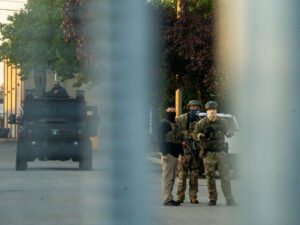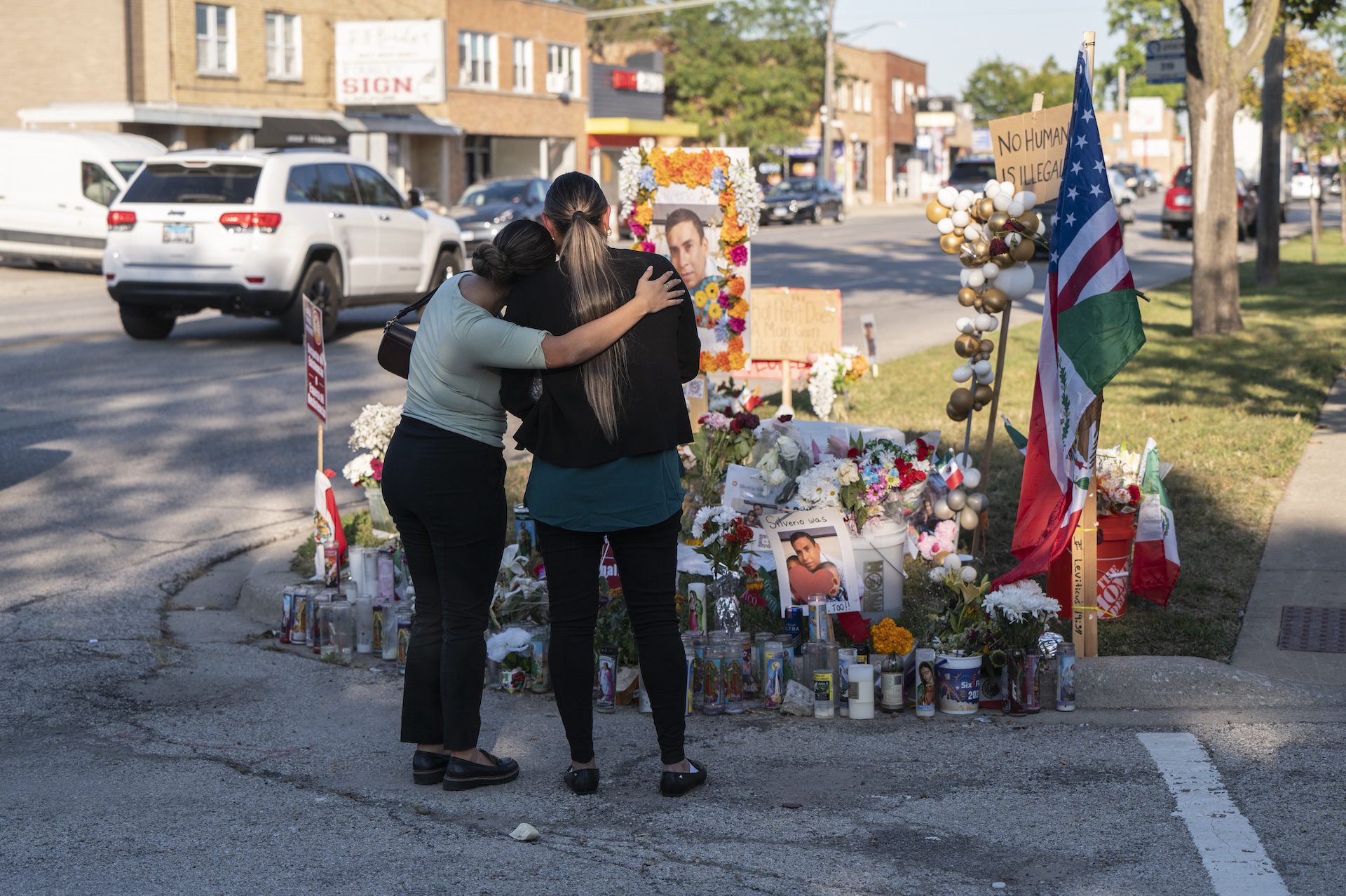 Max Herman/Borderless Magazine
Max Herman/Borderless MagazineCuando un agente del ICE disparó mortalmente contra Silverio Villegas-González el mes pasado, el momento conmocionó a una comunidad que se enorgullece de su diversidad.
Flores, velas y botellas de cerveza se acumulan en un altar improvisado en Grand Avenue, en Franklin Park, un suburbio a las afueras de Chicago.
En una tarde de finales de septiembre, un hombre deja una rosa, dos mujeres se consuelan llorando y decenas de carros se detienen brevemente ante una foto de Silverio Villegas-González.
Cuando un agente del ICE disparó mortalmente al padre de 38 años el mes pasado tras dejar a sus hijos en la guardería, algunos residentes se quedaron con el mismo pensamiento: "Podría haber sido yo."
Noticias que ponen el poder en el punto de mira y a las comunidades en el centro.
Suscríbase a nuestro boletín gratuito y reciba actualizaciones dos veces por semana.
Desde que el presidente Donald Trump lanzó la "Operación Midway Blitz," los agentes del Servicio de Inmigración y Control de Aduanas (ICE, por sus siglas en inglés) han llevado a cabo redadas en Chicago y los suburbios cercanos. Las comunidades han estado en vilo, navegando la vida mientras agentes federales hacen perfiles raciales de individuos y utilizan tácticas militares para arrestar y detener a inmigrantes. El tiroteo de Villegas-González por parte de ICE ha dejado a la comunidad luchando contra la forma en que un momento de violencia por parte del gobierno federal cambió su sensación de seguridad.
"No sé cómo se puede juzgar a una persona por su apariencia," dijo Stephen Dawson, un residente de Franklin Park, durante su reciente visita a la vigilia. "Es simplemente una situación triste."
Lo que ocurrió en Grand Avenue
En su segundo mandato como presidente, Trump ha implementado cambios radicales en la política de inmigración, incluyendo esfuerzos para poner fin a la ciudadanía por nacimiento, promulgar nuevas restricciones de visa y revocar el estatus legal de los refugiados y solicitantes de asilo.
Sobre el terreno, agentes de inmigración han recorrido las ciudades para arrestar y detener a inmigrantes en todo el país. Al menos tres personas han muerto tras un encuentro con el ICE, entre ellas Villegas-González, y al menos 15 han fallecido bajo custodia del ICE, según informó el New York Times.
Ahora,su administración ha centrado su atención en Chicago y el estado de Illinois. El Departamento de Seguridad Nacional (DHS, por sus siglas en inglés) ha llevado a cabo más de 800 arrestos en todo Illinois durante la "Operación Midway Blitz," según la agencia.
Semanas después del lanzamiento de la operación, dos agentes de inmigración detuvieron a Villegas-González en Franklin Park. Durante el breve encuentro, uno de los agentes disparó y mató al hombre de 38 años antes de que el carro que conducía chocara contra un camión.
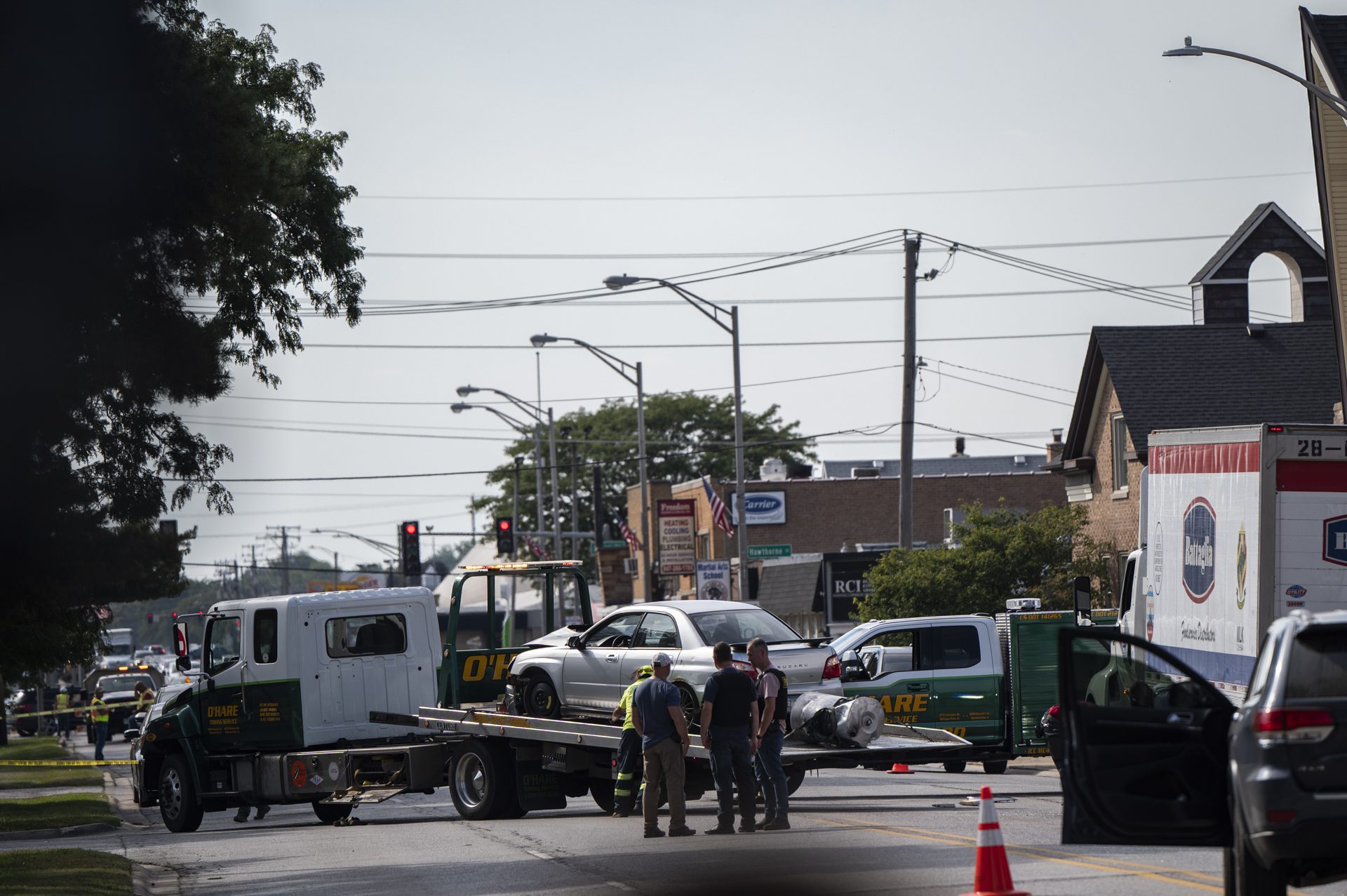
Después del tiroteo, El DHS alegó que el tiroteo fue en defensa propia, diciendo que el agente temía por su propia vida y sufrió "lesiones graves" durante la detención. Sin embargo, las grabaciones de las cámaras corporales de la policía de Franklin Park muestran a los agentes diciendo que sus heridas no eran "nada grave," lo que contradice la versión del DHS sobre el tiroteo.
La agencia dijo que Villegas-González estaba en el país "ilegalmente" y que tenía un "historial de conducción temeraria." Reuters informó que carecía de antecedentes penales y solo tenía citaciones por infracciones de tráfico entre 2011 y 2019.
En un taller de reparación de automóviles cercano, José Pedro de Blase primero pensó que la conmoción fuera era otro accidente automovilístico.
"Aquí hay accidentes automovilísticos una o dos veces al mes, así que estoy acostumbrado," dijo. Sin embargo, la fuerte presencia policial dejó claro que no se trataba de un accidente típico.
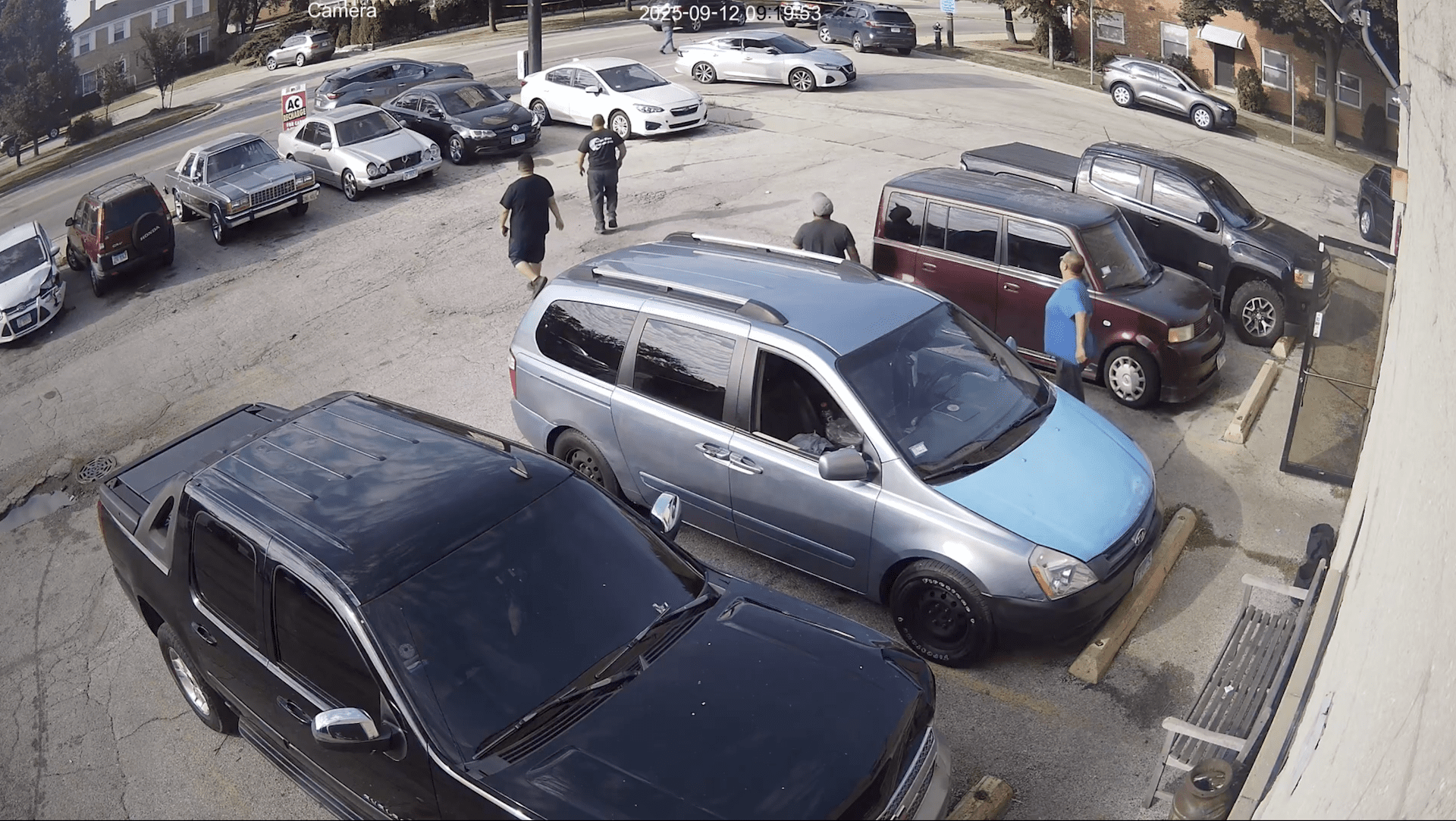
Más tarde ese mismo día, mantuvo el taller abierto hasta tarde para compartir las imágenes de seguridad con la familia de Villegas-González.
"Es completamente devastadora la forma en que perdió la vida. No es justo," dijo Jorge Villegas-González, hermano de Villegas-González, en una entrevista con Telemundo Chicago.
El cuerpo de Villegas-González fue trasladado a Michoacán, México, donde fue enterrado a finales de septiembre.
La Oficina del Servicio Médico Forense del Condado de Cook dictaminó que la muerte de Villegas-González fue un homicidio por múltiples heridas de bala.
El tiroteo de Franklin Park - y las tácticas de estilo militar empleadas por el ICE en Chicago y en los suburbios de Broadview - han provocado reacciones negativas, protestas y peticiones de investigación.
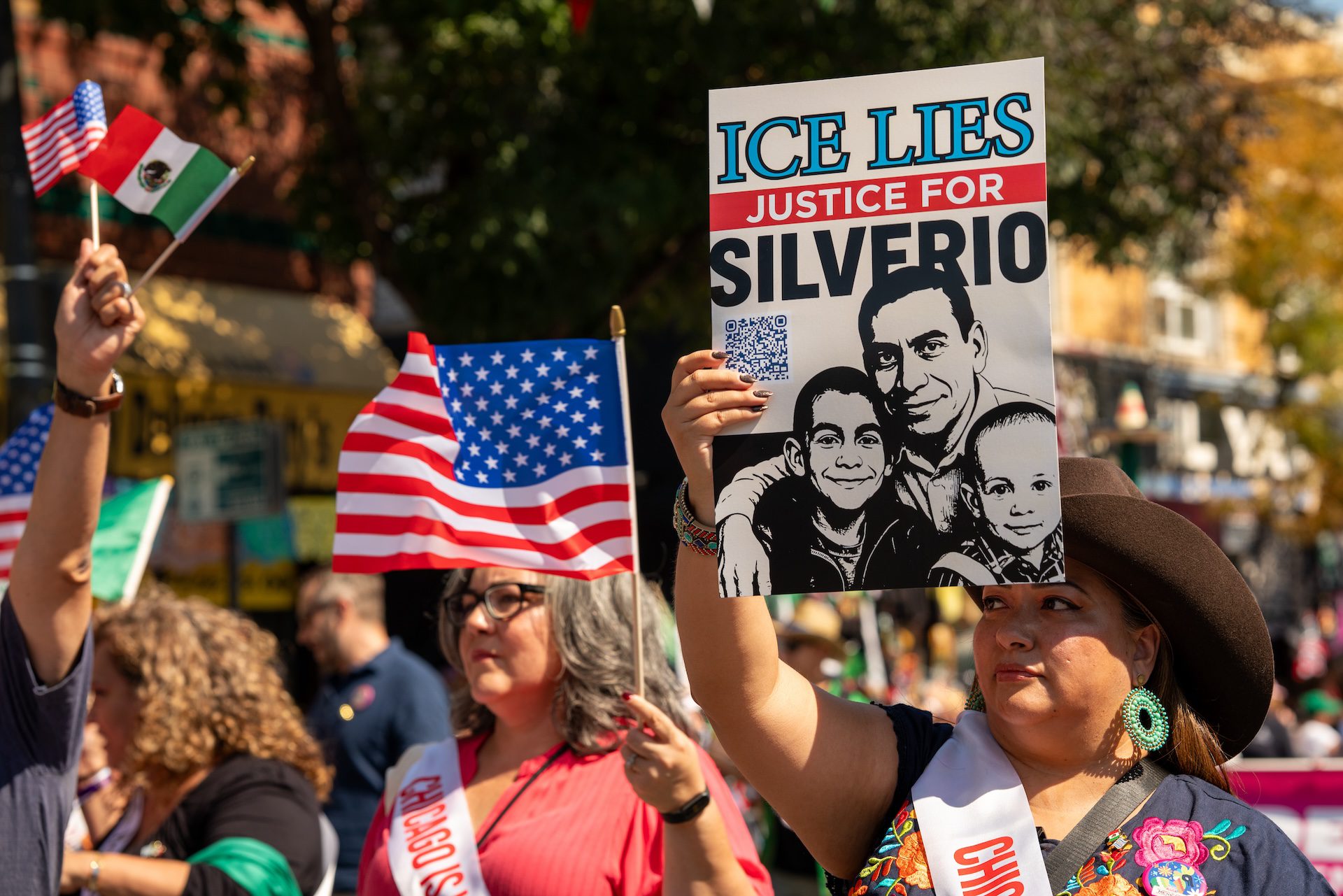
La presidenta de México, Claudia Sheinbaum, pidió que se investigara el tiroteo mortal. El Buró Federal de Investigaciones (FBI, por sus siglas en inglés) dijo a Borderless Magazine que agentes acudieron al lugar de los hechos para ayudar a las fuerzas del orden, pero que el DHS está dirigiendo la investigación del incidente en estos momentos.
Una comunidad conmocionada por un tiroteo mortal
Tras el tiroteo, el Distrito 84 emitió un comunicado en el que reconocía la trágica pérdida sufrida por la comunidad escolar.
"Nuestro dolor se agrava al saber que el individuo que perdió la vida es el padre de uno de nuestros estudiantes," dijo el distrito.
El día del tiroteo, tres escuelas cercanas al lugar de los hechos se cerraron durante aproximadamente 50 minutos, pero las clases continuaron con normalidad, según un mensaje que el Distrito Escolar 84 de Franklin Park envió a las familias esa tarde.
La semana siguiente, el Consejo de Educación emitió una declaración reconociendo el incidente como "una tragedia que nos toca de cerca, no sólo por su proximidad a nuestras escuelas, sino sobre todo por nuestra humanidad compartida y nuestra creencia colectiva de que la raza, la etnia, la religión, la identidad de género o el estatus migratorio de una persona no definen su valor como ser humano."
El superintendente del distrito, David Katzin, dijo que hay profesionales de la salud mental a disposición tanto para los estudiantes como para personal afectados emocionalmente por este trágico suceso, y que no se permite la entrada del ICE en los edificios sin una orden judicial.
Más información
La noticia del tiroteo mortal fue impactante para Stephen Dawson y su esposa, Tammi, ambos residentes de Franklin Park de toda la vida. Para Tammi, la forma en que los residentes de Franklin Park se han unido en línea tras el tiroteo ha sido una fuente de consuelo.
Ella y Stephen visitaron la vigilia dejada en Grand en honor de Villegas-González, días después del tiroteo. Allí, los Dawson se reunieron con su hijo, su nuera y su nieto para presentar sus respetos a un hombre al que nunca habían conocido.
"Como estamos en una comunidad tan diversa, podría ser cualquiera," dijo Dawson. "Podría ser gente que conocemos."
Alrededor de un tercio de los residentes de Franklin Park son nacidos en el extranjero, y los idiomas más hablados en casa son el español, el inglés y el eslavo. Hoy, la mayoría de sus residentes son hispanos o latinos, pero hace décadas, residentes polacos, italianos y eslavos llenaban las escuelas y trabajaban en las fábricas cercanas.
"Franklin Park es un crisol de culturas," dijo Stephen, miembro jubilado de la junta escolar local. "Lo maravilloso para mí es la cantidad de países que están representados en nuestras escuelas — Sudamérica, Centroamérica, México, Europa del Este. De todo."
‘Podría pasarle a cualquiera.’
A pocas cuadras de allí, la vigilia se sitúa en un conjunto de casas adosadas, donde velas, flores y carteles decoran una foto de Villegas-González con sus hijos. Se encuentra frente a la casa de Carlos Cortés, quien dijo que no estaba en casa durante el tiroteo, pero ha compartido su propio video de seguridad con la policía y los medios de comunicación.
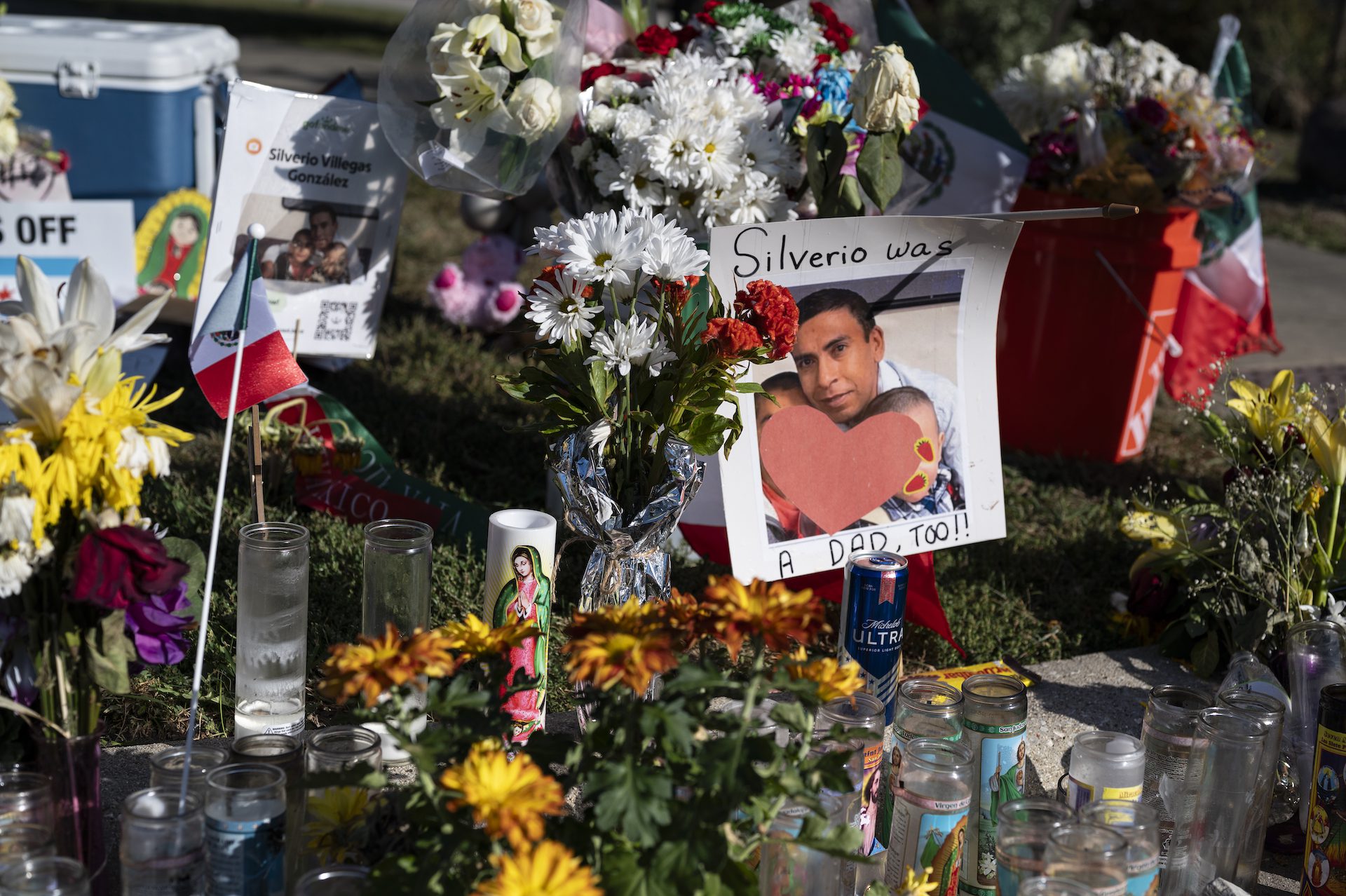
Al igual que muchos negocios cercanos al lugar, incluida la guardería donde Villegas-González acababa de dejar a su hijo, los comercios se han visto inundados con peticiones de los medios de comunicación. Varios residentes y trabajadores de la zona dijeron a Borderless que todos los días les pedían imágenes o comentarios. Algunos dijeron que habían dejado de responder.
En la misma calle que Cortés, Elizabeth Díaz y Yadira Nevarez se enteraron del tiroteo el mismo día del suceso mientras trabajaban en un banco local, después de que un cliente les preguntara por teléfono si habían oído algo. Abrieron TikTok para confirmar la noticia. Algunos clientes no acudieron a sus citas ese día y el negocio se ralentizó durante unos días tras el incidente, dijeron.
"Para nosotros, los viernes son de mucho tráfico; hay mucha gente," dijo Díaz. "Creo que por miedo, la gente no vino en todo el día."
Díaz y Nevarez se consolaron mutuamente durante una emotiva visita a la vigilia después del trabajo, pocos días después del tiroteo.
Para ellas y otras personas en Franklin Park, la vigilia no es sólo un homenaje a Villegas-González, sino una forma de enfrentarse a un temor mayor que suscita la presencia continua del ICE en Chicago.
"Es triste porque le podría pasar a cualquiera," dijo Nevarez, de pie ante la vigilia.
Aydali Campa es miembro del equipo de Report for America y cubre temas de justicia medioambiental y comunidades inmigrantes para Borderless Magazine. Envíale un correo electrónico a [email protected].
